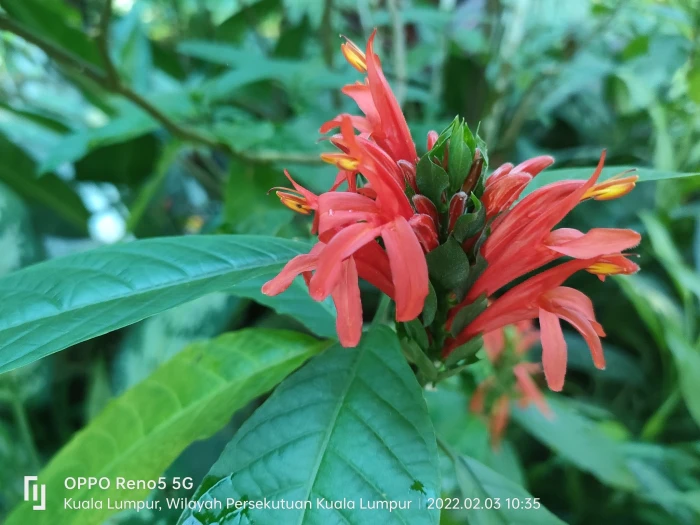Chandelier Plant
(Pachystachys spicata)
Chandelier Plant (Pachystachys spicata)
/
/

© Ong Jyh Seng
CC BY-SA 4.0
Image By:
© Ong Jyh Seng
Recorded By:
Copyright:
CC BY-SA 4.0
Copyright Notice:
Photo by: © Ong Jyh Seng | License Type: CC BY-SA 4.0 | License URL: http://creativecommons.org/licenses/by-sa/4.0/ | Uploader: ongzi | Publisher: iNaturalist |

























Estimated Native Range
Climate Requirements
| • Precipitation | 65" - 78" |
| • High Temp. | 83°F - 92°F |
| • Low Temp. | 56°F - 71°F |
Summary
Pachystachys spicata, commonly known as Chandelier Plant, Spiked Lollipop Plant, or Cardinal’s Guard, is a perennial herb native to the understory of tropical rainforests in South and Central America and the West Indies. It exhibits a moderate growth rate, reaching heights of 3-5 feet (0.9-1.5 meters) and spreading 2-3 feet (0.6-0.9 meters). The plant is characterized by its upright form and showy, white inflorescences that resemble lollipops, which bloom prolifically in the spring, summer, and fall, attracting pollinators such as hummingbirds and butterflies.
Pachystachys spicata is valued for its ornamental flowers and its ability to thrive in the dappled light conditions typical of understory environments, making it suitable for shaded garden areas, patios, and as a houseplant. It is often used in tropical-themed gardens and as an accent plant in mixed borders. This species prefers consistently moist, well-drained loam or sandy soils with good organic content. While it requires medium amounts of water, it is important to avoid waterlogging. The Chandelier Plant is not known for significant pest or disease problems, but it can be sensitive to cold temperatures and should be protected from frost. In regions outside its native range, it is not considered invasive and can be managed easily in a controlled garden setting.CC BY-SA 4.0
Pachystachys spicata is valued for its ornamental flowers and its ability to thrive in the dappled light conditions typical of understory environments, making it suitable for shaded garden areas, patios, and as a houseplant. It is often used in tropical-themed gardens and as an accent plant in mixed borders. This species prefers consistently moist, well-drained loam or sandy soils with good organic content. While it requires medium amounts of water, it is important to avoid waterlogging. The Chandelier Plant is not known for significant pest or disease problems, but it can be sensitive to cold temperatures and should be protected from frost. In regions outside its native range, it is not considered invasive and can be managed easily in a controlled garden setting.CC BY-SA 4.0
Plant Description
- Plant Type: Shrubs
- Height: 3-5 feet
- Width: 2-3 feet
- Growth Rate: Moderate
- Flower Color: White
- Flowering Season: Spring, Summer, Fall
- Leaf Retention: Evergreen
Growth Requirements
- Sun: Part Shade
- Water: Medium
- Drainage: Medium
Common Uses
Border Plant, Low Maintenance, Potted Plant, Showy Flowers
Natural Habitat
Understory of tropical rainforests in South America, Central America and the West Indies
Other Names
Common Names: Spiked Lollipop Plant , Cardinal’s Guard , Panache , Panache D’Officier , Plumet D’Officier (Lesser Antilles) , White Shrimp Plant
Scientific Names: Pachystachys spicata , Jacobinia coccinea , Justicia carnea , Justicia spicata , Justicia spicata , Justicia spicata , Justicia spicata , Lasiocladus spicatus , Pachystachys asperula , Pachystachys riedeliana
GBIF Accepted Name: Pachystachys spicata